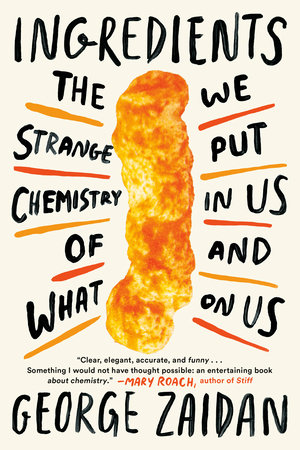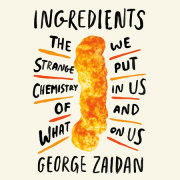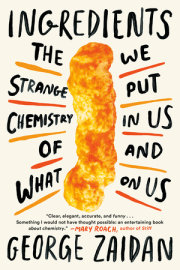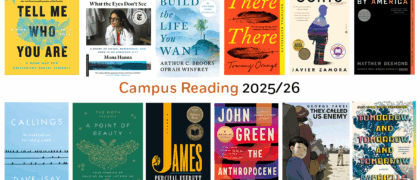PART I: Why Does This Stuff Even Exist?
"How to Do a Coffee Enema (Behind-the-Scenes in My Bathroom)" -Title of a YouTube video
Chapter One: Processed Food Is Bad for You, Right?
This chapter is about ingredient labels, diabetes, uninhabited islands, porn, and homemade Cheetos.
The road to hell sure isn't paved with butter anymore.
It's cobblestoned with Reese's, studded with Gushers, and sprinkled with Cheeto dust. Your chariot is made entirely from Snickers and Twix, with Oreo wheels, pulled by Haribo horses.
The road to hell is a bunch of industrial, unnatural chemicals made in unholy imitation of food, embalmed in a bright box, and marketed to within an inch of its life. Simply put: processed food is poison.
Right?
Well, it's clearly not a literal poison. Eating a Cheeto isn't going to immediately kill you unless it's laced with a gram or two of cyanide. But what if you eat two bags of Cheetos every day for thirty years? That's 21,915 bags-more than 1,300 pounds-of Cheetos. How would that change your risk of a heart attack, or cancer, or death? And how would we know Cheetos did the deed? You can't drag a Cheeto into Judge Judy's courtroom. And even if you could, you'd be unlikely to get a conviction without grainy CCTV video of that puffed piece of cheese-coated cornmeal taking a machete to the victim's heart. And you can forget about the other Cheetos in the bag incriminating their friend. Cheetos don't snitch.
Processed food legal proceedings notwithstanding, there must be answers to these questions out there somewhere. Processed foods either do or don't increase your risk of cancer. They either do or don't increase your risk of a heart attack. They either are or are not bad for you. If you're thinking: I already know they're bad for me, because when I eat them, I feel like crap, I hear ya. I'm all for listening to your body, and that's a valuable data point for your everyday life. But you could just be experiencing a nocebo effect, which is like the placebo effect for bad stuff: if you expect something to feel like crap, it will. Even if it's not all in your head, feeling like crap doesn't give you the kind of information you need to make long-term decisions. There are lots of things that make you feel like crap that don't affect your long-term risk of death or disease, like the common cold or calling your cable company. And there are things that feel great that dramatically affect your long-term risk of death or disease, like smoking cigarettes.
For long-term decisions, you'd like to know:
1. How much processed food exactly is bad for you?
2. Does doubling your Cheeto consumption double your risk? Or do you have to eat a threshold number of Cheetos before anything bad happens?
3. How much life does every additional Cheeto suck from your body?
4. How bad is bad? How many years of life can you expect to give up in return for your processed-food habit?
I thought the answers to these questions just existed out there in the ether, and all I had to do was Google them. Turns out, they do-sort of. And I found them-sort of. But I also found a lot more. What I learned changed the way I look at food . . . but not how I expected. It wasn't like changing your mind from one extreme to the other. I didn't stop seeing Satan in the soggy crumbs of milk-soaked Oreos and instead start hearing choirs of castrated Chester Cheetahs in angelic harmony. It wasn't like that at all. It was as if another dimension had been added to my existence.
We're going to start exactly where I did: with processed food. In Part One, we're going to worry ourselves sick about it, and we'll talk about why it even exists in the first place. In Part Two, we'll look beyond processed food, at some of the chemicals we expose ourselves to on a daily basis-from Cheetos to sunscreen to cigarettes. In Part Three, we'll come back to all the terrifying numbers you're about to read in this chapter and we'll ask: How does science come up with these numbers? Finally, we'll try to figure out what all this means for you.
Without further ado, let's start at the beginning. To figure out if processed food is bad for you, we have to define processed food. Why? Think of the following (totally hypothetical) experiment to test whether processed food affects blood pressure:
1. You lock one hundred people in a room.
2. You feed half of them a diet chock-full of processed food and the other half no processed food.
3. You measure their blood pressure over the next ten days.
To do this experiment, everyone has to agree on what processed food is, because . . . someone has to actually go shopping and buy all the processed food that your human guinea pigs are going to eat.
Sounds pretty obvious, right? But if the definition of "processed food" isn't crystal clear, then the result of the experiment won't be, either. Imagine if the person doing the shopping was told to buy all foods that were sold in a wrapper. Seems pretty straightforward. But that person could buy fancy gold-foil-wrapped pears or Twix, plain oatmeal or Lucky Charms, a freshly baked baguette or Pepperidge Farm Raisin Cinnamon Swirl bread. If the definition of the thing you're testing isn't clear, your results could be all over the map: you could claim processed food is good, bad, or neutral when really, it's good, bad, and neutral.
In other words, a complete clusterwhoops. So, to scientifically test whether processed food is going to send you to an early grave, we first have to define "processed food."
Okay. Easy-like sorting at Hogwarts, right?
Jam—not processed (GRYFFINDOR!)
Oreos—processed (SLYTHERIN)
Tortillas—GRYFFINDOR!
Cheetos—SLYTHERIN
Olives—GRYFFINDOR!
Starburst—SLYTHERIN
Though it pains me to say it, the Hogwarts method is unscientific. All the foods above-whether Gryffindor or Slytherin-are processed in some way. So essentially what we've just done is sorted these foods based on how good or bad we feel about them. But dumping all the foods above into the "processed" bucket doesn't seem right, either. For one thing, "processed" feels like a meaningless category if it's wide enough to hold both "jam" and "Cheeto." For another, the list of "not processed" foods would be way too short-basically raw meat and veggies.
It just feels like there should be something fundamentally different about processed and unprocessed foods, kind of like it feels like there should be something fundamentally different about the classic kids' tale Harry Potter and the Sorcerer's Stone and the freely-available-on-Pornhub Hairy Smallballer and the Failure to Bone, even though both movies are about Harry and Hermione never having sex.
One popular definition of "processed food" is based on how complicated the food seems. This boils down to two things: how many ingredients it has and how pronounceable these ingredients are. Chemists tend to dismiss this definition as nonsensical foolishness, but I think it's worth spending a little time here. First of all, credit where it's due: this definition is clear and simple. But it's not great if you're trying to do any science on processed foods. Why? Imagine if you came up with a "processed-food index" (PFI) based on these two metrics. Something like this:
PFI = number of ingredients + number of syllables in the names of all the ingredients
PFI for Skittles:
PFI=19 Ingredients + 84 syllables = 103
Here's the PFI for Smarties:
PFI = 9 + 34 = 43
Here's the PFI for coffee:
PFI = roughly 1,000 + roughly 4,000 = roughly 5,000
Intuitively, Skittles and Smarties are probably equally processed, but according to the PFI, Skittles are 2.4 times as processed. Coffee, which is roasted and then extracted with hot water (relatively simple processing) is, according to the PFI, 49 times as processed as Skittles and 116 times as processed as Smarties.
The problem is that the PFI doesn't actually measure processing; it measures how the FDA regulates ingredient labels and how chemists name molecules. For example, enriched flour contains a molecule that goes by three different names:
riboflavin
vitamin B2
7,8-dimethyl-10-[(2S,3S,4R)-2,3,4,5-tetrahydroxypentyl]benzo[g]pteridine-2,4-dione
All three names refer to the identical molecule, but they would yield wildly different PFIs. That problem gets even worse with more complicated mixtures of molecules, like coffee. It doesn't have an ingredient label at all, so what should you use to calculate the PFI? "Coffee" (PFI = 3), "Coffea arabica" (PFI = 6), or, as I chose to do above, a list of all the chemicals we currently know to be in a cup of coffee (PFI = 5,000)? Depending on what you choose, coffee appears to be either one-thirtieth as processed or 49 times as processed as Skittles.
So some sort of intuitive "ingredient complexity" scale might be fine for quick comparisons in the grocery store, but it won't do for science.
Coming up with a reasonable food processing index that will work in scientific experiments is hard. Carlos Monteiro, a nutritionist and researcher in public health, has, along with his team, proposed a system called the NOVA food classification system. NOVA classifies foods based on the "nature, extent, and purpose" of food processing. In other words: How was the food processed, how much was it processed, and why was it processed? Instead of a numerical scale or two simple buckets-processed or not-the NOVA system has four, ranging from "unprocessed or minimally processed foods" all the way up to "ultra-processed foods." Here are some examples of what might go in each bucket:
Group 1: Edible plants, animals, or parts of plants and animals, and any of these when processed to preserve them in their (mostly) original form. Monteiro puts foods like milk, dried fruit, rice, plain yogurt, and coffee in this group.
Group 2: Stuff that you would use as an ingredient but not eat by itself. For example, butter, sugar, salt, and maple syrup.
Group 3: Foods made by adding group 2 foods to group 1 foods. Ham would fall into this category, as would jams and jellies, canned tuna in oil, and fresh breads.
Group 4: Sodas, ice cream, chocolate, instant anything, baby formula, energy drinks, most breakfast cereals, candy, packaged breads, and lots of other stuff . . . including Cheetos.
This seems pretty intuitive, but before we get any further, it's worth noting that the NOVA system is a drastic departure from the way food is currently studied. Most nutrition research today focuses on what's in the food. NOVA focuses mostly on what was done to the food. The easiest way to see this is by looking at some nutrition facts.
Food A Nutrition Facts
Serving Size 100 G
Calories 160
Total Fat 14.7 G
Total Carbs 8.5 G
Dietary Fiber 6.7 G
Food B Nutrition Facts
Serving Size 100 G
Calories 23
Total Fat 0.4G
Total Carbs 3.6G
Dietary Fiber 2.2. G
From the perspective of what's in them, the two foods above are about as different as they could possibly be. Food A has more than twice the carbs, 3 times the fiber, and 37 times as much fat as food B (oh, and lest we forget, 7 times the calories). And yet these foods are both in NOVA group 1. (Food A is avocado, food B is spinach.)
Here's another example:
Food C Nutrition Facts
Serving Size 100 G
Calories 304
Total Fat 0 G
Total Carbs 82.4 G
Dietary Fiber 0.2 G
Food D Nutrition Facts
Serving Size 100 G
Calories 375
Total Fat 0.1 G
Total Carbs 93.5 G
Dietary Fiber 0.2 G
The foods above both have roughly the same number of calories, fiber, sugars, and fats; but food C is NOVA group 2, and food D is NOVA group 4. Guess what each one is.
NOVA's emphasis on what was done to a food rather than what's in a food is not accidental. It's based on the theory that what is done to foods is "the most important factor . . . when considering food, nutrition and public health," as Monteiro puts it. Bold strategy, Cotton, but it appears to be paying off for him: the World Health Organization, the Pan American Health Organization, and the Food and Agriculture Organization of the United Nations have leaned into the NOVA system pretty hard.
Group 4 is the heart of the NOVA system. These foods are what Monteiro calls "ultra-processed foods" or "ultra-processed foods and drinks," and they're defined as "not modified foods but formulations made mostly or entirely from substances derived from foods and additives, with little if any intact Group 1 food." Ultra-processed foods include additives that aren't found in other foods, including flavorings, dyes, and this delicious-sounding list of stuff: "carbonating, firming, bulking and anti-bulking, de-foaming, anti-caking and glazing agents, emulsifiers, sequestrants and humectants." But the definition goes beyond what's added to the food: Ultra-processed foods, according to Monteiro, are produced in industrial processes and designed to be inexpensive and convenient. Finally, they are "packaged attractively and marketed intensively."
You probably haven't heard it phrased quite like this, but this is a description of what you intuitively recognize as "processed food": absurdly cheap, ridiculously convenient, universally delicious, and barely recognizable as food. The NOVA classification is, in essence, a reasonably systematic way of telling whether you're watching Sorcerer's Stone or Failure to Bone.
Let's review the research done using the NOVA classification.
I was very surprised when I realized just how much of our diet is made up of ultra-processed foods. In the U.S., over 58 percent of our calories come from ultra-processed foods. More than half! Canada is not much better at 48 percent; France is holier-than-thou (as per usual) at 36 percent. The U.S. is bad compared to France, but weÕre ahead of Spain (61 percent), and we look like health nuts compared with Germany and the Netherlands at 78 percent! Some of these numbers are so high, they set off my bullshit radar. But on the other hand, these percentages are all based on calorie intake, and ultra-processed foods are usually calorie dense. If, for example, all you ate on a given day was a two-liter bottle of Coke and fourteen cups of raw spinach, you would have gotten 90 percent of your calories from ultra-processed foods that day. Or if you happen to pull through a Sonic drive-through and order the (very tempting) large Oreo peanut butter shake, you would have to eat two whole sticks of butter or 117 cups of spinach to get your ultra-processed food intake down to 51 percent.
So we're clearly eating a lot of ultra-processed food. But is it killing us? And if so, how? Ultra-processed food could be killing us in a variety of ways: there could be too many chemicals that are toxic to us, there could be not enough chemicals that are good for us, or ultra-processed food could simply be making us obese, and that could be killing us.
So one important question is: Does processed food actually make you obese? The hypothesis goes like this: Over the past two hundred years, there has been an incredible increase in the availability of ultra-processed foods, which are extremely calorie dense, cheap, and very convenient. They're also designed to be addictive, so you eat more-specifically, more sugar and fat, and less fiber and micronutrients. Over time, this makes you more overweight or obese, which increases your risk for basically every disease, but especially diabetes, heart disease, and cancer. Transnational food conglomerates don't seem to care, because they're basically just following the tobacco industry's playbook: they're happy to rake in the cash now and kill people later.
Copyright © 2020 by George Zaidan. All rights reserved. No part of this excerpt may be reproduced or reprinted without permission in writing from the publisher.










